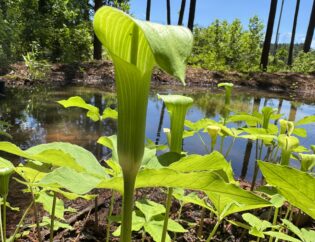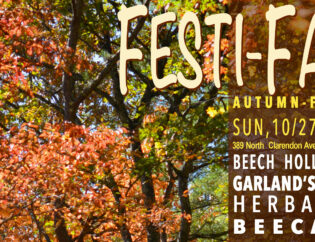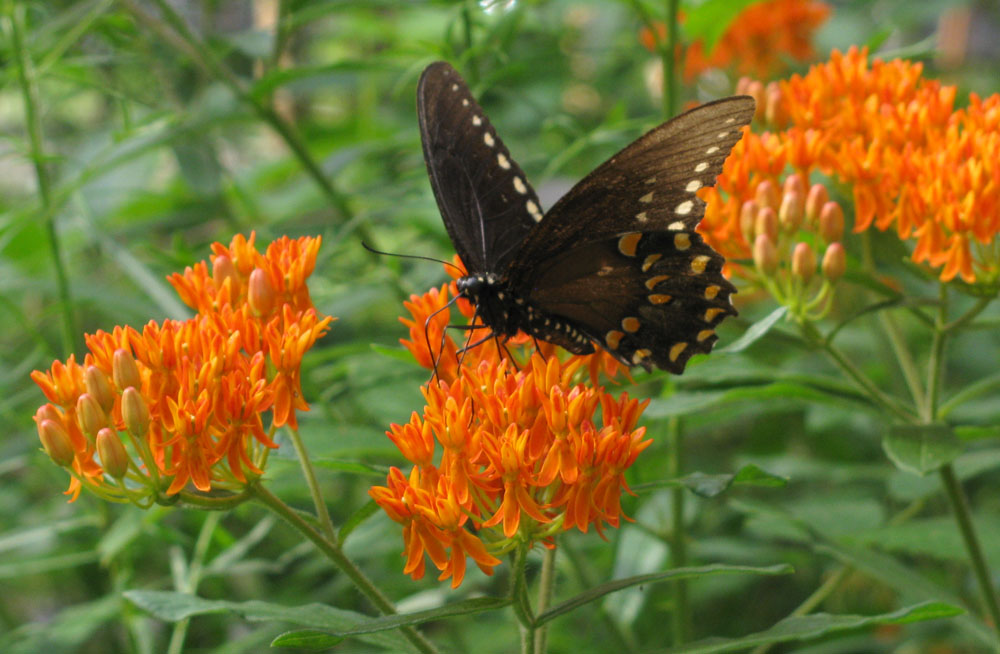
One of the common names of Asclepias tuberosa is ‘Butterflyweed’ so one would expect to see butterflies. This female Tiger Swallowtail (Papilio glaucus) is dipping her long proboscis into the nectar rich base of the flower in order to drink it up. It’s like a built in straw.
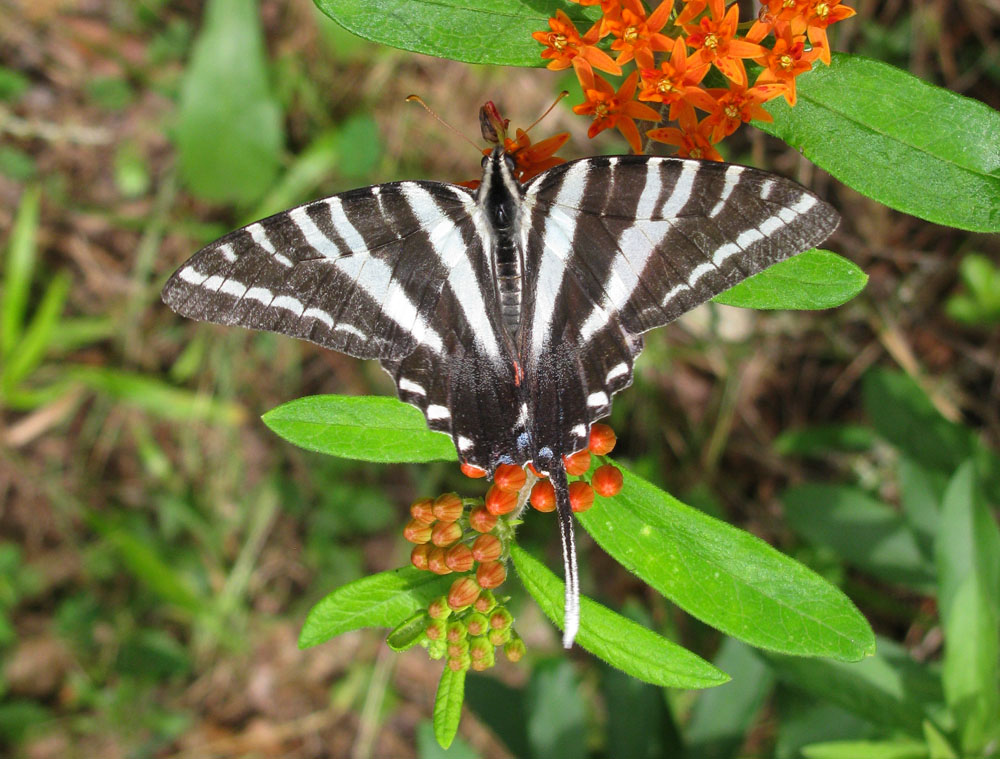 A close cousin, the Zebra Swallowtail (Eurytides marcellus) also feeds on the nectar. Much like the Monarch Zebra Swallowtail caterpillars can only feed on the leaves of the plants in a single genus, Asimina, or Paw Paws.
A close cousin, the Zebra Swallowtail (Eurytides marcellus) also feeds on the nectar. Much like the Monarch Zebra Swallowtail caterpillars can only feed on the leaves of the plants in a single genus, Asimina, or Paw Paws.
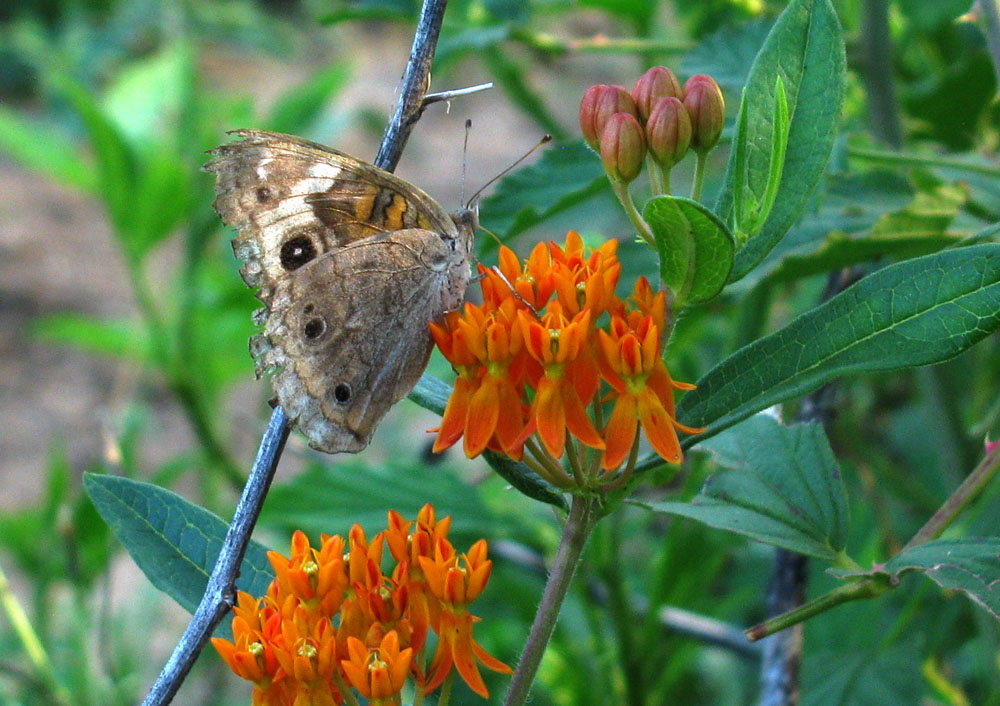
This Common Buckeye (Junonia coenia) was looking a little tattered, as it was probably approaching the end of it’s ~2 week long adult life. It was still sipping nectar as it rested on the flowers.

Bees also love the nectar from this plant. Here a Green Sweat Bee (Agapostemon spp.) perches it’s tiny body atop the flower as it sips nectar from inside. It’s just one of the hundreds of species of native bees here in Georgia.

Another Native bee, possibly a Leafcutter bee (I’m not an entomologist), feeding on nectar.

Another possible leafcutter bee: the whitish mat of hairs on the underside of it’s abdomen are used for collecting pollen. Look closely to the right of the bee and you’ll see an ant sipping nectar as well.
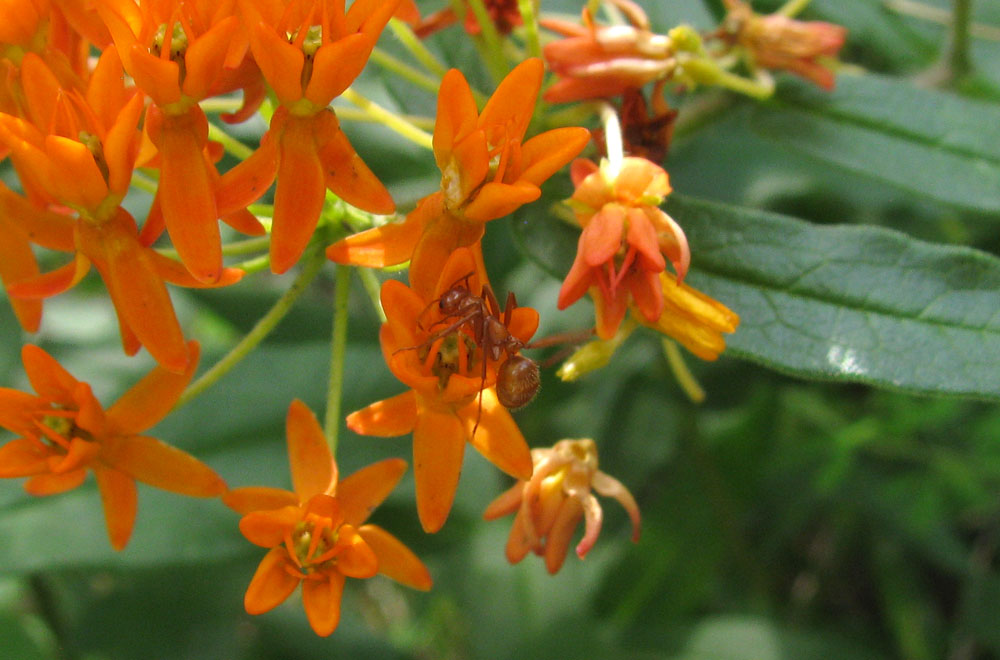 Speaking of Ants, this Fire Ant also found it’s way up the 3 foot tall stalks for a sugary meal. Ants can be pollinators too, and they are responsible for dispersing the seeds of many spring blooming wildflowers such as Trillium and Bloodroot.
Speaking of Ants, this Fire Ant also found it’s way up the 3 foot tall stalks for a sugary meal. Ants can be pollinators too, and they are responsible for dispersing the seeds of many spring blooming wildflowers such as Trillium and Bloodroot.

This Great Golden Digger Wasp (Sphex ichneumoneus) feeds on nectar as an adult, but like most wasps it hatched from an egg laid on another insect and fully consumed it before the metamorphosis into it’s current winged form. Golden Digger Wasps are predators to Grasshoppers, Katydids and Crickets.
 This Yellow Jacket adult enjoys sugary nectar, but its larvae need a more protein rich diet, which the adults supply by hunting other insects (many of which are agricultural pests). Wasps are much maligned by humans, but without their predatory behavior we would be literally drowning in bugs and our crops would be decimated.
This Yellow Jacket adult enjoys sugary nectar, but its larvae need a more protein rich diet, which the adults supply by hunting other insects (many of which are agricultural pests). Wasps are much maligned by humans, but without their predatory behavior we would be literally drowning in bugs and our crops would be decimated.

And finally, not everyone is there for the nectar! This is one of several clever lizards I’ve seen recently near blooming flowers lying in wait for some distracted pollinator to drift too close…..
Milkweed is for Monarchs, but after they have migrated north it’s for butterflies, moths, bees, wasps, ants, beetles, aphids, and even lizards.
